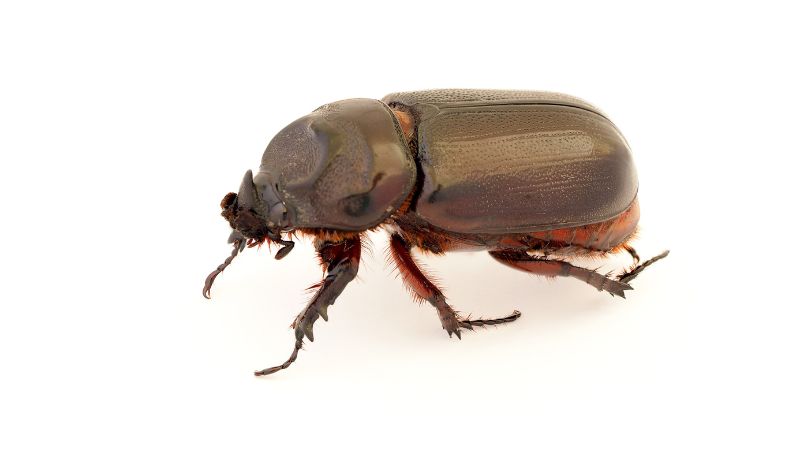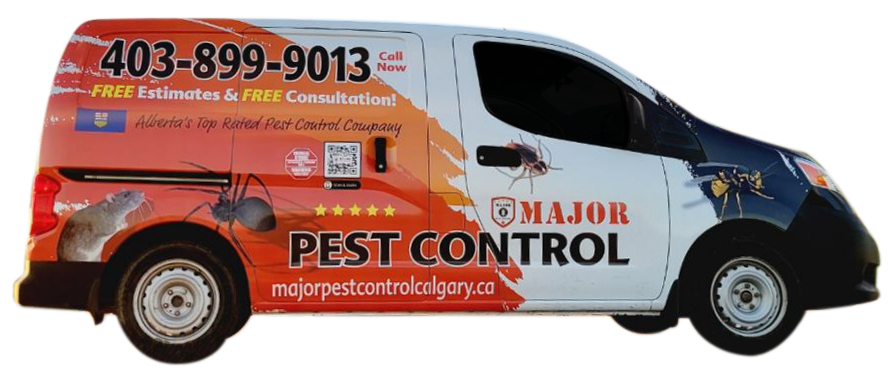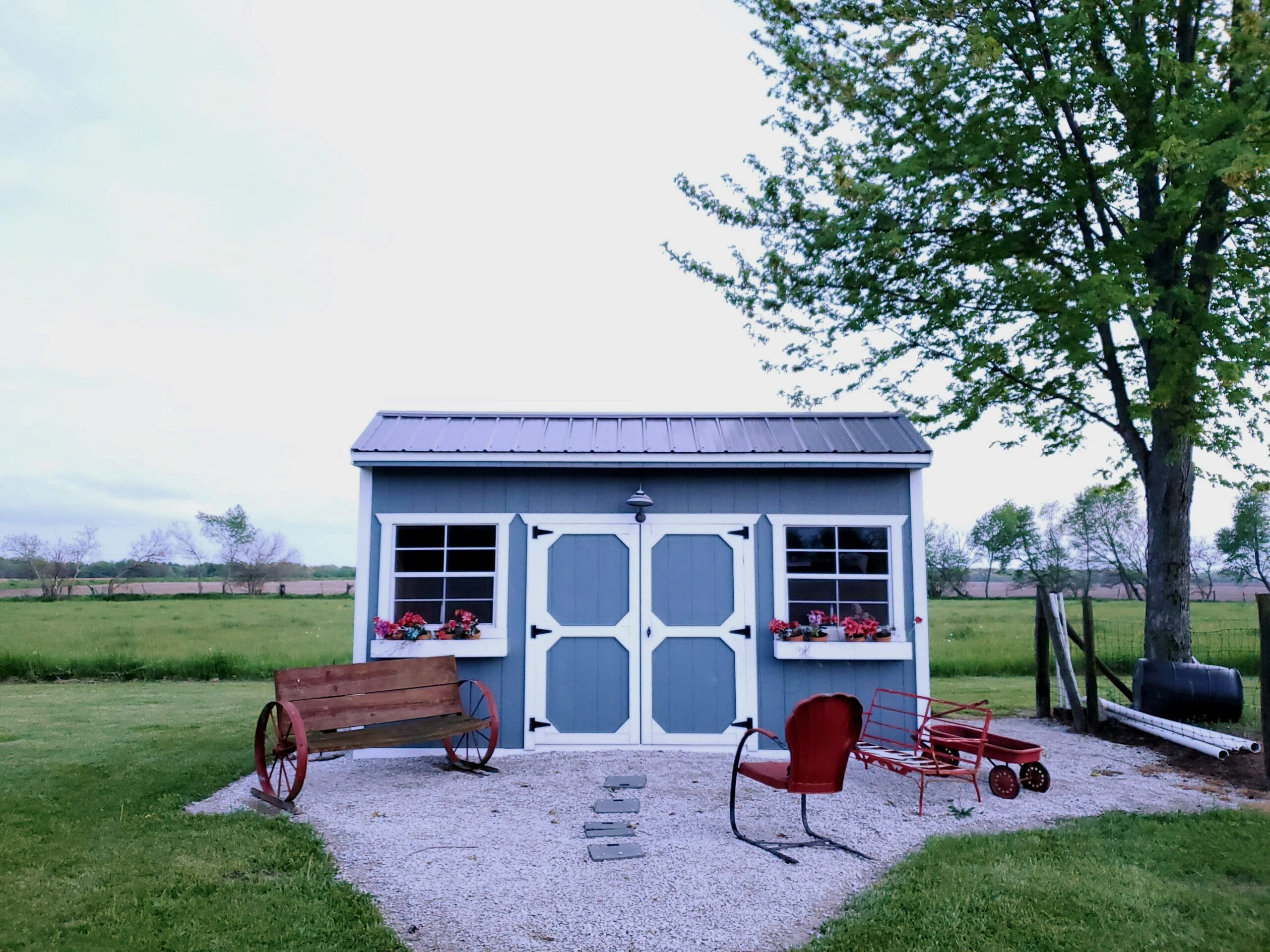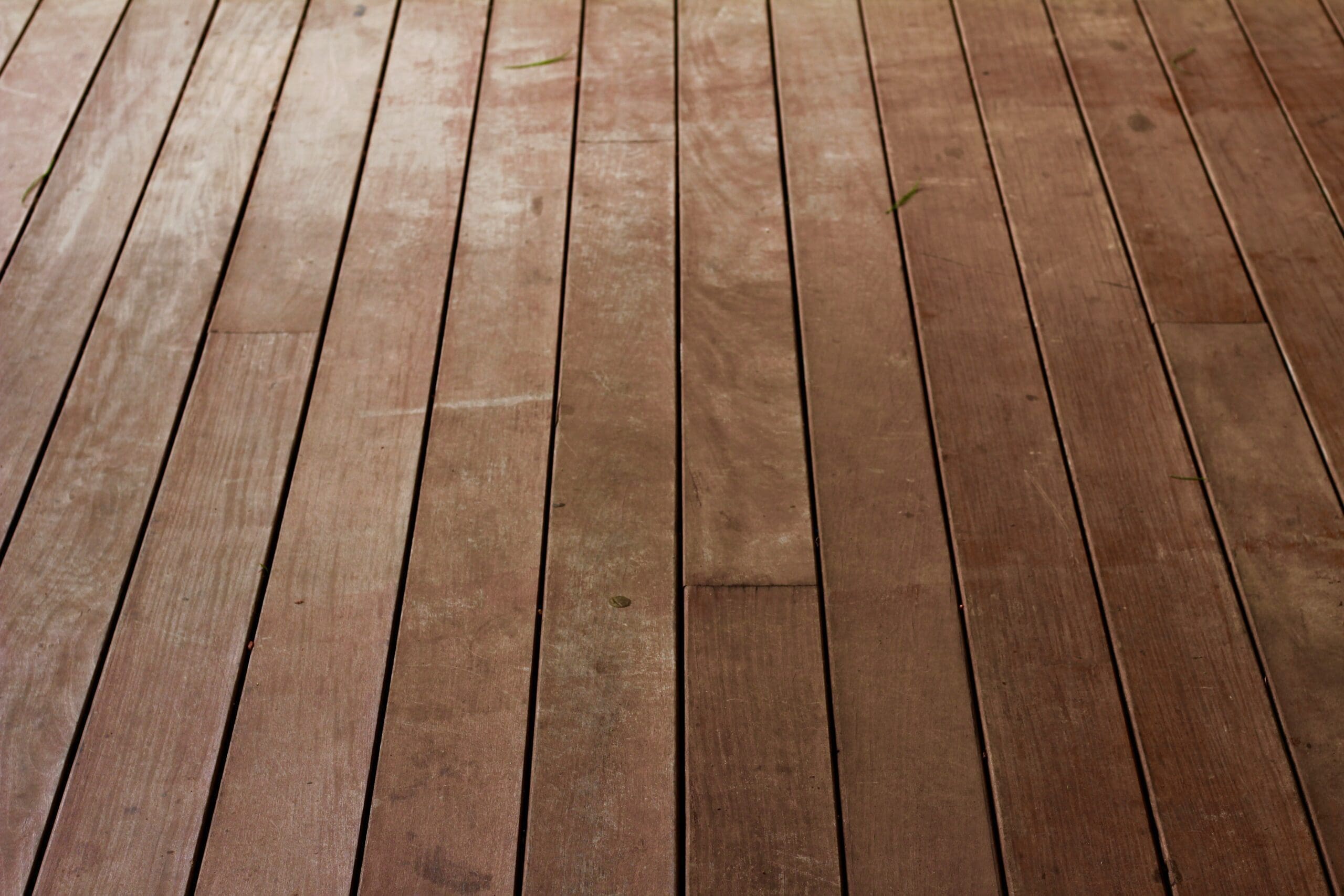

Beetle Control In Calgary
Learn more about beetles, what they do, what to do with them below! If you are looking for expert beetle control in Calgary we are here to help!
We guarantee our pest control services, including our beetle control services.


Get a free estimate


6 REASONS TO CHOOSE MAJOR PEST CONTROL
We offer a complete 58 Point Pest Control Survey & Analysis of your home or building.
We’re committed to customer satisfaction, with over 1000 Google 5 Star ratings for pest control.
A team of experienced pest technicians to carry out all pest control services.
Associate certified entomologist and a public health specialist on staff 24 hours a day.
You will have a direct line to the owner of the company 24/7! (No run-around ever)
Our GUARANTEE is UNMATCHED by any competitors! (If you’re not happy, you don’t pay!)
Why Do I Have Beetles In Calgary?
Beetles are found in nearly every habitat on earth and exhibit many different lifestyles. Many beetles live in association with plants, while others are burrowing and live in underground tunnels or in trees, and still others are semi to fully aquatic. Of the more than 9,000 beetle species found in Canada, two of the most notorious troubling species, Asian lady beetle and Carpet beetle. Some other common nuisance beetle species in Canada include the following: drugstore beetles, flour beetles, fungus beetles, grain beetles, ground beetles, old house borer beetles, plaster beetles, and wood-infesting beetles. If you think you have an infestation of any of these, give Major Pest Control Calgary a line here , so they can take care of it for you!
What Attracts Beetles To Your Calgary Home?
Beetles are one of the largest groups of animals on earth with more than 400,000 known species as of today. As such, some beetle species are helpful to humans, such as ladybugs that feed on crop pest insects, while other species are problematic to humans, such as those in the carpet beetle family that feed on clothing and items made from fur, leather, wool, or silk and whose activities are often mistaken for moth damage.
Types Of Beetles Around Calgary
Asian Lady Beetle: The scientific name of Asian lady beetles is Harmonia axyridis. They grow up to 8 mm in length and can have different colors, such as orange, red, or yellow, and have different numbers of black spots on the body, while all species bear a distinctive M-shaped mark behind their head on the thorax. An infestation of Asian lady beetles is marked by large groupings of these insects, often in overwhelming numbers, as well as finding piles of dead Asian lady beetles around windows and in light fixtures. While Asian lady beetles may deliver a painful bite, they do not break the skin nor transmit disease.
Carpet Beetle: The scientific name of carpet beetles is Anthrenus verbasci. They are 2 to 5 mm in length, are dark brown to black in color, with an oval body shape, chewing mouthparts, and very short clubbed antennae. Some species also bear colored scales (white, yellow, orange, red, brown) unique to the specific species. A carpet beetle infestation is commonly detected when adult beetles are observed on windowsills. However, most damage by carpet beetles is caused by their larvae that feed on carpets, fabrics, and textiles.
In contrast to moth damage which creates tiny holes all over the fabric, carpet beetle larvae eat a single large area of the garment. Another sign of carpet beetle infestation is discovering cast off skins from carpet beetle larvae molting, which are linked to allergic reactions and dermatitis in susceptible individuals.
Drugstore Beetle: The scientific name of drugstore beetles is Stegobium paniceum. The drugstore beetle can be up to 3.5 mm in length, also known as the bread beetle, biscuit beetle, and misnamed as the biscuit weevil (despite not being a true weevil), is a tiny, brown beetle that can be found infesting a wide variety of dried plant products, where it is among the most common non-weevils to be found. The drugstore beetle has a worldwide distribution though it is more common in warmer climates.
It is similar in appearance to the cigarette beetle, but is slightly larger. Additionally, drugstore beetles have antennae ending in 3-segmented clubs, and also has grooves running longitudinally along the elytra.
Flour Beetle: Flour beetles are members of the darkling beetle genera Tribolium or Tenebrio. They are pests of cereal silos and are widely used as laboratory animals, as they are easy to keep. The flour beetles consume wheat and other grains and are adapted to survive in very dry environments. They are a major pest in the agricultural industry and are highly resistant to insecticides.
The most common flour beetle found in Canada is the Aphanotus brevicornis, the North American flour beetle.
Fungus Beetle: Pleasing Fungus Beetles are part of the Erotylidae family, they feed on plant and fungal matter and have gained notoriety as pests of some significance. They are light brown, reddish brown or dark brown, can range from 2 – 4 mm in size and are oval and flattened in shape, with fine hairs on their wing cases. They can also be known as Silken fungus beetles, Hair fungus beetles, Spotted hairy fungus beetles.
Grain Beetle: The scientific name for the merchant grain beetle is Oryzaephilus mercator. It is a small, flattened beetle about 2.5mm in length. It is a common, worldwide pest of grain and grain products as well as fruit, chocolate, drugs, and tobacco. In the home, products susceptible to infection should be kept in sealed containers to exclude these beetles.
Freezing infested foodstuffs at -18 °C for six days will kill all stages of the O. mercator life cycle. Infestations always center around a food source used for breeding and the identification and removal of all infested foodstuffs will eliminate the population.
Ground Beetle: Ground beetles are a large, cosmopolitan family of beetles, the Carabidae, with more than 40,000 species worldwide, around 2,000 of which are found in North America. Members of the family are primarily carnivorous, but some members are phytophagous or omnivorous. Although their body shapes and coloring vary somewhat, most are shiny black or metallic and have ridged wing covers (elytra).
Old House Borer Beetle: The Hylotrupes, or Old House Borer Beetle, as it more commonly referred by, is a monotypic genus of woodboring beetles in the family Cerambycidae, the longhorn beetles. This species, originating in Europe, and having been spread in timber and wood products, now has a practically cosmopolitan distribution, including Southern Africa, Asia, the Americas, Australia, and much of Europe and the Mediterranean. Some can reach a body length of about 8–20 mm. These beetles are brown to black, appearing grey because of a fine grey furriness on most of the upper surface.
Plaster Beetle: Latridiidae (sometimes spelled “Lathridiidae“) is a family of tiny, little-known beetles commonly called plaster beetle or minute brown scavenger beetles. Adult beetles in this family are some shade of brown and between 1.2 and 2 mm in length. They may be present in ripening cereal crops but will not persist in clean, dry stored grain; however damp grain, or grain heavily contaminated by other insects, will support them.
Wood-infesting Beetle: The term wood-infesting beetle encompasses many species and families of beetles whose larval or adult forms eat and destroy wood (i.e., are xylophagous). In the woodworking industry, larval stages of some are sometimes referred to as woodworms. Wood-infesting beetles include ambrosia beetles, long-horned beetles, wharf borers, metallic wood borers, true powderpost beetles, false powderpost beetles, and deathwatch beetles.
Why do I have Asian lady beetles?
Asian lady beetles are a species introduced to the United States as a form of biological pest control but are now a nuisance in Canada. Asian lady beetles are adapted to live in rural and urban environments and live for more than a year. In the winter, Asian lady beetles seek out the warmth that homes provide and invade through tiny cracks and crevices.
How worried should I be about Asian lady beetles?
Asian lady beetles can play a beneficial role in the garden and in fields, feeding on insects that damage crops and ornamental plants. In the home, however, Asian lady beetles are a nuisance with the ability to deliver a painful bite which cannot break the skin and is not dangerous. Additionally, Asian lady beetles secrete a yellow liquid with a distinctly unpleasant odor that stains surfaces. Dead Asian lady beetles often collect in piles on windowsills and in light fixtures.
Why do I have carpet beetles?
Carpet beetles are often inadvertently introduced into homes by being carried in on plants or flowers. Once inside, they lay their eggs in carpets, furs, wool, leather, bird nests, and spider webs. After hatching, the larvae travel to dark, dry, undisturbed places such as air ducts, lint balls, or stored grains, spices, or pet food. These locations provide both shelter and food to the developing larvae until they develop into their adult form. Depending on the species, this transition can take from weeks to years.
How worried should I be about carpet beetles?
Carpet beetle larvae can damage carpets and fabrics by eating irregular holes into them as well as damage wool, silk, feathers, and leather by consuming entire chunks. Carpet beetle larvae have bristly hairs that may cause skin irritation. Additionally, the molted skins of larvae can cause allergic reactions and dermatitis in susceptible individuals. Eradication of a carpet beetle infestation is best achieved by employing the services of a trusted and reputable professional pest control company, like Major Pest Control.
Why do I have beetles in my Calgary home?
More than 9,000 species of beetles make their homes across Canada. A few common ones include carpet beetles, powder post beetles, saw-toothed grain beetles, spider beetles, and tiger beetles. Beetles invade structures seeking food and shelter by utilizing cracks in the foundation or gaps around window frames and doors. Beetles may also come in as hitchhikers in firewood, lumber, furniture, potted plants, or packages being delivered. In these cases homeowners unsuspectingly bring in already infested items.
All beetles have the general goal of avoiding challenging weather conditions when they invade your home. However beetles are quite varied in preferences of food sources. Some sources of beetles attractants may include healthy trees, wooden structures, wood products, carpet, furs, leathers, wools, and silk, or crops and stored food.
How worried should I be about beetles?
In some settings, beetles may be beneficial by consuming pests in the garden such as aphids. Many other species, however, can be highly destructive to your home and belongings. Adult beetles and their larvae can wreak havoc on furniture, carpets, décor, packaged goods, and clothing, as well as leave deposit unpleasant evidence of their infestation. They may leave behind dusty excrement or brittle, skeletonized shells, as well larvae that leave behind brown, shell-like cast skins when molting.
How can I prevent beetles from invading?
The preventive measures taken to prevent beetle infestations depend on the species. In some cases, using products like varnish in finished wood products can prevent infestations by wood-boring insects. In other cases, such as with beetles feeding on interior items, prevention may be more difficult due to the ease with which they can acquire food from obscure places.
An example is carpet beetles for proper sanitation and exclusion are the most successful strategies. Also carefully inspect foodstuffs when purchasing for evidence of beetles that feed on crops and grains. Store foodstuffs in sturdy, airtight containers and maintain a high degree of sanitation in areas where food is stored clean.
Where Can You Find Beetles In Calgary?


Cabinets and Cupboard


Lawns


Sheds


Gardens


Baseboards & Floor Boards


Shops and Garages
Contact Major Pest Control Calgary
Pest Control is something people always dread because they think it costs an arm and a leg when in reality it isn’t bad at all!
Our experts on site will give you a detailed inspection and quote. Usually for beetle removal Calgary it will cost around $300 – $1,000 depending on the severity and size of the nest.
Major Pest Control Calgary is one of the leading pest control & extermination companies in Alberta, providing professional pest solutions 24/7. Our service is fast, safe, effective, affordable and environmentally friendly. We’re a top-rated Calgary exterminator and offer a 100% money-back guarantee on our pest control services.

